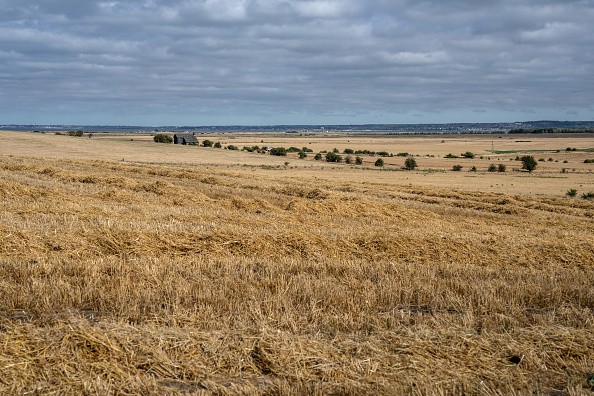For the first time, research has demonstrated that British grazed grasslands with less intensive management have, on average, 50% more plant species and better soil health.
The new research could support farmers in improving soil health, biodiversity, and carbon levels in rural areas of Britain.
Less intensively managed grasslands have higher plant diversity
 (Photo : Carl Court/Getty Images)
(Photo : Carl Court/Getty Images)

A significant portion of the British countryside is made up of grazed grassland, which is essential to farming and rural communities.
Although it may be assumed that this land is only used for food production, this study provides more proof that it may also be crucial for boosting soil health and biodiversity.
940 grassland plots were studied by researchers at the UK Centre for Ecology & Hydrology (UKCEH).
The plots were randomly chosen to represent the range of grassland management in Great Britain, from intensively managed land with few sown grassland species and high levels of soil phosphorus (indicating plowing/reseeding and fertilizer and slurry application) to grassland with higher levels of species and lower levels of soil phosphorus.
The study tallied the number of plant species in the sample areas and examined soil samples from the same areas to count soil invertebrates and determine levels of carbon, nitrogen, and phosphorus.
Researchers discovered that grassland that was less intensively managed had a greater variety of plant species. Surprisingly, this diversity was correlated with better soil health, as evidenced by higher nitrogen and carbon levels as well as higher populations of soil invertebrates like springtails and mites.
The Pasture Fed Livestock Association (PFLA), a farmer organization that has developed standards to manage and improve soil and pasture health, represents 56 mostly beef farms in the study.
Using the same methods, the researchers looked at the plant diversity and soil from grasslands on these farms.
In comparison to intensively farmed plots from the Countryside Survey, the researchers discovered that PFLA farm plots had greater plant diversity-on average, six more plant species, including various kinds of grasses and herbaceous flowering plants.
Additionally, the grassland plants on these farms were frequently taller, a characteristic that has been shown to be advantageous for butterflies and bees.
The research revealed that there may be a time lag between the expansion of plant species and changes in soil health, particularly on farms that have previously been intensively managed, which may explain why Pasture Fed Livestock Association grasslands have not yet demonstrated improved soil health.
This work also tells us that the Pasture Fed Livestock Association members are on the right track to increase biodiversity, though it may take longer to see improvements in soil health, according to lead author Dr. Lisa Norton, Senior Scientist at UKCEH.
"We've shown for the first time, on land managed by farmers for production, that a higher diversity of plants in grasslands is correlated with better soil health," says Norton, as per ScienceDaily.
Read more: Tropical Grassland Ecosystems are Mismanaged and Threatened, Study Says
Grassland threats
More than a quarter of the world's land is made up of grasslands, which are distinguished by their level, open pastures and abundance of nutrient-rich soil. Grasslands also account for about 70% of the world's agricultural land, as per National Geographic.
This biome is home to a variety of plants and animals, which increases its resistance to calamities like wildfires and droughts.
In fact, native grassland plants have become so accustomed to harsh weather patterns that savannas, a subset of grasslands that can be found in Africa, Australia, South America, and India, need periodic wildfires and droughts to maintain their biodiversity.
Loss of habitat for grasslands is a threat, and it can be brought on by human activities like overgrazing, unsustainable agricultural practices, and crop clearing.
Only 1% of the original tallgrass prairie remains today, and nearly 50% of all temperate grasslands and 16% of tropical grasslands have been converted to agricultural or industrial uses.
Related article: Deforestation, Degradation Turns 26% of Amazon Rainforest to Grassland, Report Reveals
© 2024 NatureWorldNews.com All rights reserved. Do not reproduce without permission.

![Tsunami Hazard Zones: New US Map Shows Places at Risk of Flooding and Tsunamis Amid Rising Sea Levels [NOAA]](https://1471793142.rsc.cdn77.org/data/thumbs/full/70325/280/157/50/40/tsunami-hazard-zones-new-us-map-shows-places-at-risk-of-flooding-and-tsunamis-amid-rising-sea-levels-noaa.jpg)



